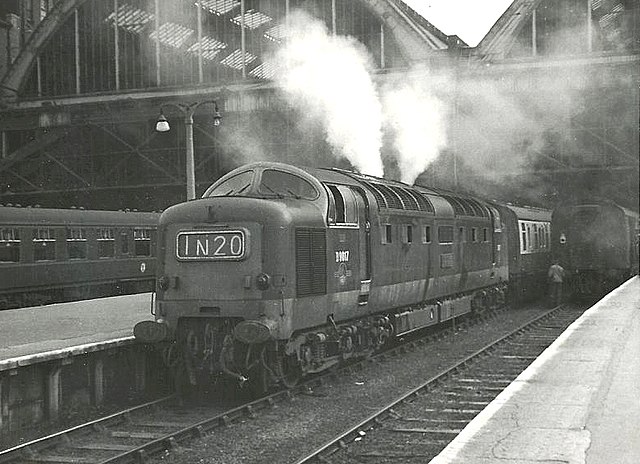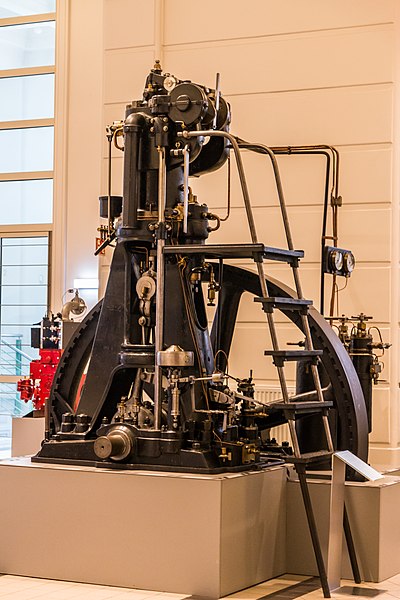Diesel exhaust is the gaseous exhaust produced by a diesel type of internal combustion engine, plus any contained particulates. Its composition may vary with the fuel type or rate of consumption, or speed of engine operation, and whether the engine is in an on-road vehicle, farm vehicle, locomotive, marine vessel, or stationary generator or other application.
British Rail Class 55 Deltic diesel locomotive with their characteristic dense exhaust when starting a train.
A diesel engine that operates below the smoke limit produces a visible exhaust. In modern motor vehicle diesel engines, this condition is generally avoided by burning the fuel in excess air even at full load.
Heavy truck, with visible particulate soot.
The diesel engine, named after Rudolf Diesel, is an internal combustion engine in which ignition of the fuel is caused by the elevated temperature of the air in the cylinder due to mechanical compression; thus, the diesel engine is called a compression-ignition engine. This contrasts with engines using spark plug-ignition of the air-fuel mixture, such as a petrol engine or a gas engine.
Diesel engine built by Langen & Wolf under licence, 1898
Rudolf Diesel's 1893 patent on a rational heat motor
Diesel's second prototype. It is a modification of the first experimental engine. On 17 February 1894, this engine ran under its own power for the first time. Effective efficiency 16.6% Fuel consumption 519 g·kW−1·h−1
First fully functional diesel engine, designed by Imanuel Lauster, built from scratch, and finished by October 1896. Rated power 13.1 kW Effective efficiency 26.2% Fuel consumption 324 g·kW−1·h−1.







